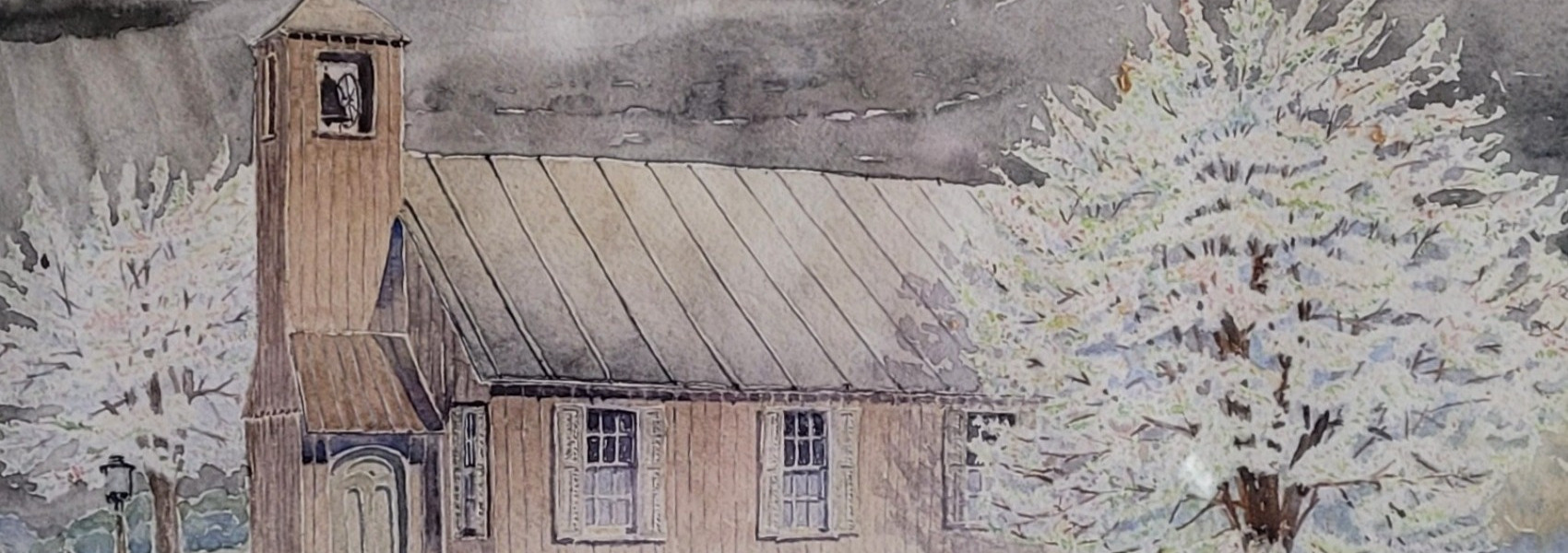Our Mission Statement
We are a community of God’s beloved people, called to share Christ’s faith, hope, and love with the world.
Caldwell United Methodist History
Methodism in Caldwell, NJ started back in 1893 as an outgrowth of the Verona Methodist Church. At first, informal services were held in the homes of loyal Methodists in the town. The first official Methodist preaching service was led by the Rev. Charles F. Kirk in the G.A.R. Hall on February 4, 1894. The “First Methodist Episcopal Church” was incorporated in the summer of 1894. A temporary building called the Methodist Episcopal Tabernacle [see above] was erected on Cleveland Street at a total cost of $600.00. In 1899 the cornerstone was laid on the present location and the building was completed and dedicated in March, 1900. On December 16, 1945, under the leadership of Aubrey H. Guyn, ground was broken for the present Church school building. Construction was completed the following year. A connecting building was erected in1962 joining the Church and Church school.
History of the United Methodist Church
The United Methodist Church shares a common history and heritage with other Methodist and Wesleyan bodies. The lives and ministries of John Wesley (1703–1791) and of his brother, Charles (1707–1788), mark the origin of their common roots. Both John and Charles were Church of England missionaries. Both of the Wesley brothers had transforming religious experiences in May 1738. In the years following, the Wesleys succeeded in leading a lively renewal movement in the Church of England. As the Methodist movement grew, it became apparent that their ministry would spread to the American colonies as some Methodists made the exhausting and hazardous Atlantic voyage to the New World.
To strengthen the Methodist work in the colonies, John Wesley sent two of his lay preachers, Richard Boardman and Joseph Pilmore, to America in 1769. Two years later Richard Wright and Francis Asbury were also dispatched by Wesley to under gird the growing American Methodist societies. Francis Asbury became the most important figure in early American Methodism. His energetic devotion to the principles of Wesleyan theology, ministry, and organization shaped Methodism in America in a way unmatched by any other individual.
The American Revolution had a profound impact on Methodism. John Wesley’s Toryism and his writings against the revolutionary cause did not enhance the image of Methodism among many who supported independence. Furthermore, a number of Methodist preachers refused to bear arms to aid the patriots. When independence from England had been won, Wesley recognized that changes were necessary in American Methodism. He sent Thomas Coke to America to superintend the work with Asbury. Coke brought with him a prayer book titled The Sunday Service of the Methodists in North America, prepared by Wesley and incorporating his revision of the Church of England’s Thirty-Nine Articles of Religion.In December 1784, the movement became organized as The Methodist Episcopal Church in America.
Two other churches were also being formed. The first was founded by Philip William Otterbein (1726–1813) and Martin Boehm (1725–1812), and in 1800 their followers formally organized the Church of the United Brethren in Christ. A second church, The Evangelical Association, officially organized in 1803, was begun by Jacob Albright of Pennsylvania (1759–1808), who had been converted and nurtured under Methodist teaching.
These two churches were to unite with each other in 1946 to become The Evangelical United Brethren Church.
The Methodist Church had been formed in 1939 from a union between the Methodist Episcopal Church, the Methodist Protestant Church, and the Methodist Episcopal Church, South.
The Evangelical United Brethren Church merged with The Methodist Church in 1968 to form The United Methodist Church.

